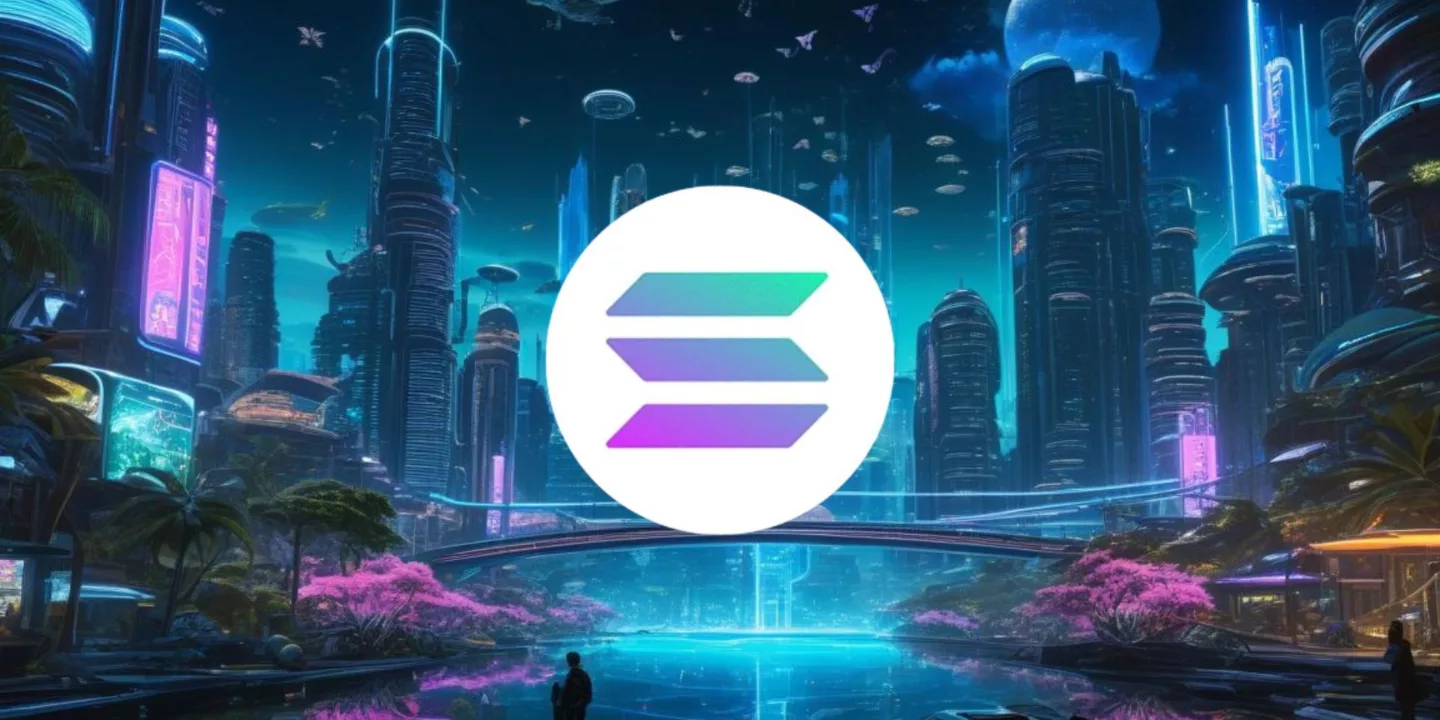
The Solana Ecosystem: Explained
The Solana ecosystem has emerged as a powerhouse in the blockchain space, offering fast and low-cost transactions, making it ideal for efficient trading. With numerous decentralized platforms and tools built on Solana, traders can capitalize on the network’s speed and scalability. This article will guide you through the steps to trade effectively on Solana-based platforms, covering essential tips, strategies, and the benefits of using Solana for trading activities.
Key takeaways:
- Overview of the Solana Ecosystem
- Key Decentralized Exchanges (DEXs) on Solana
- How to Start Trading on Solana?
- Comparing Solana with Other Blockchains
- Risks and Considerations
- Future Trends and Developments
Overview of the Solana Ecosystem
The Solana blockchain is a high-performance, decentralized network designed to provide fast, secure, and scalable transactions. Launched in 2020, Solana quickly gained attention for its ability to process thousands of transactions per second (TPS) with minimal fees, making it one of the fastest blockchains in the world.
Key features include its unique Proof of History (PoH) consensus mechanism, which enhances transaction speed by creating a historical record that proves an event occurred at a specific moment in time. This innovative approach allows Solana to maintain high throughput without sacrificing security or decentralization.
Solana’s architecture is built for scalability, making it an ideal platform for decentralized applications (dApps), decentralized finance (DeFi) projects, non-fungible tokens (NFTs) and even a thriving memecoin ecosystem. The combination of speed, low costs, and scalability has positioned Solana as a leading contender in the blockchain space, offering significant advantages to developers, traders, and investors alike.
Key Decentralised Exchanges (DEXs) on Solana
Solana’s ecosystem is home to several key decentralized exchanges (DEXs) that offer unique features and benefits to traders and developers.

Jupiter is a prominent DEX aggregator on Solana, known for providing the best prices across multiple exchanges. It seamlessly integrates various liquidity sources, enabling users to find optimal trade routes and minimize slippage. Jupiter’s user-friendly interface and extensive token support make it a go-to platform for traders seeking efficiency and cost-effectiveness.

Raydium is another vital component of the Solana DEX ecosystem, functioning as an automated market maker (AMM). It leverages the liquidity from Solana’s Serum DEX and offers fast, low-cost trades, as well as yield farming opportunities. Raydium’s deep liquidity pools and integration with Serum’s order book make it an essential platform for both new and experienced traders.

Orca is designed with simplicity and accessibility in mind, earning its tagline “DeFi for the people.” It offers a straightforward interface for trading and liquidity provision, making DeFi accessible to a broader audience. Orca emphasizes ease of use and community engagement, making it a popular choice among Solana users.

Mango Markets caters to advanced traders, offering features such as margin trading, perpetual futures, and decentralized lending. It combines the speed and low fees of Solana with sophisticated trading tools, making it a preferred platform for traders looking for more control and options in their trading strategies.
How to Start Trading on Solana?
Starting to trade on the Solana ecosystem is a straightforward process, but it requires a few key steps to get you up and running.
Setting Up a Solana Wallet
The first step is to create a Solana wallet. Popular wallets like Phantom, Sollet, and Solflare are user-friendly and widely used in the Solana ecosystem. These wallets allow you to store, send, and receive Solana (SOL) and other tokens. After downloading the wallet extension or app, follow the setup instructions, including securely storing your seed phrase.
Funding Your Wallet
Once your wallet is set up, you need to fund it with SOL, the native cryptocurrency of the Solana network. You can purchase SOL on major cryptocurrency exchanges. After acquiring SOL, transfer it to your Solana wallet using the wallet’s public address. Ensure you have enough SOL to cover transaction fees and trading activities.
Connecting to DEXs
With your wallet funded, the next step is to connect it to a decentralized exchange (DEX) on Solana, such as Jupiter, Raydium, or Orca. Visit the DEX website and click on the “Connect Wallet” button. Select your Solana wallet, and authorize the connection. This process links your wallet to the DEX, allowing you to trade directly from your wallet.
Executing Trades
After connecting your wallet, you can start trading. Choose the tokens you want to trade, enter the amount, and review the transaction details. Once satisfied, confirm the trade and the DEX will execute it using the liquidity available on the platform. Your new tokens will be sent directly to your Solana wallet.
Comparing Solana with Other Blockchains
When comparing Solana with other blockchains like Ethereum, several key differences highlight the unique features and performance metrics of each platform.
Solana vs. Ethereum
Solana and Ethereum are both powerful blockchain platforms, but they operate on different principles. Ethereum, launched in 2015, is known for its pioneering role in smart contracts and decentralized applications (dApps). However, Ethereum’s Proof of Work (PoW) consensus mechanism, although secure, leads to higher transaction fees and slower processing times. The transition to Ethereum 2.0 and its Proof of Stake (PoS) model aims to address these issues. Although transaction fees have significantly decreased, the average costs remain noticeably higher compared to Solana.
Solana, on the other hand, was designed from the ground up to solve these scalability issues. Launched in 2020, Solana uses a unique Proof of History (PoH) combined with a Proof of Stake (PoS) consensus mechanism, which allows it to process thousands of transactions per second (TPS) at a fraction of Ethereum’s cost. This makes Solana more suitable for high-frequency trading and applications requiring fast transaction speeds.
Unique Features and Performance Metrics
Solana’s high throughput and low transaction costs are significant advantages, particularly for users and developers looking to avoid the congestion and high fees often seen on Ethereum. However, Ethereum’s larger ecosystem, established developer community, and a higher degree of decentralization give it a different type of resilience and flexibility.
While Ethereum remains a dominant player with a broad range of applications, Solana offers a compelling alternative for those prioritizing speed, scalability, and cost-efficiency.
Risks and Considerations
When trading on the Solana ecosystem, it’s essential to manage risks effectively to safeguard your investments.
Security Practices
Firstly, ensure that your Solana wallet is secure by using strong passwords and enabling two-factor authentication. Consider storing large amounts of funds in hardware wallets, which are less vulnerable to online threats. Be cautious of phishing attempts and only interact with trusted and verified decentralized exchanges (DEXs) and platforms.
Common Pitfalls
One of the common pitfalls in Solana trading is falling for scams or rug pulls, where a seemingly legitimate project suddenly disappears with investors’ funds. Always conduct thorough research before investing in new tokens or projects. Additionally, due to Solana’s rapid transaction speeds, traders may inadvertently execute trades without fully considering market conditions, leading to potential losses.
Managing Risks
Diversify your portfolio to spread risk across various assets, and use stop-loss orders to limit potential losses during volatile market conditions. By staying informed and vigilant, traders can better navigate the risks associated with Solana trading.
Future Trends and Developments
The Solana ecosystem is poised for significant growth, with several upcoming features and developments set to enhance its functionality and appeal.
Upcoming Features
Notable advancements include the integration of more robust decentralized finance (DeFi) protocols, expanding Solana’s reach into various financial services. Additionally, Solana’s developers are working on improving scalability and transaction speeds, which are already among the fastest in the blockchain industry.
Growth Prospects
As the ecosystem continues to attract new projects and users, Solana’s adoption is expected to rise, particularly in areas like non-fungible tokens (NFTs), gaming, and decentralized applications (dApps). The increasing interest from institutional investors and developers further underscores Solana’s potential for long-term growth.
Community Involvement
The active and engaged Solana community plays a critical role in driving innovation and development. Community-led initiatives, hackathons, and governance participation are likely to contribute to the ecosystem’s evolution, ensuring that Solana remains at the forefront of blockchain technology.
Conclusion
Trading on the Solana ecosystem offers low fees, high-speed transactions, and access to innovative DeFi projects. To start trading, choose a reliable wallet, connect to Solana-based decentralized exchanges, and explore the diverse assets available. As Solana develops, its ecosystem is becoming a fertile ground for lucrative potential. Stay informed, conduct thorough research, and consider Mudrex as a partner to optimize your trading strategies and understand the evolving crypto landscape with confidence.
FAQs
How does the Solana ecosystem work?
The Solana ecosystem operates on a high-performance blockchain network that supports various decentralized applications (dApps). It uses a unique consensus mechanism combining Proof of History (PoH) and Proof of Stake (PoS) to ensure fast transaction speeds and low costs. This setup makes Solana an appealing platform for developers and users, supporting a range of applications, including DeFi projects, NFTs, and other blockchain-based services.
How to Trade Solana for Fiat?
To convert Solana into fiat currencies like the Indian Rupee (INR), you can use a cryptocurrency exchanges like Mudrex. After selling your Solana (SOL) on the exchange, you can withdraw the proceeds to your bank account in your local currency.
How Can You Profit from Solana?
You can profit from Solana through several methods, including staking SOL tokens to earn rewards or passive income, engaging in decentralized finance (DeFi) activities, trading SOL on various exchanges, or investing in promising projects within the Solana ecosystem that have growth potential.





